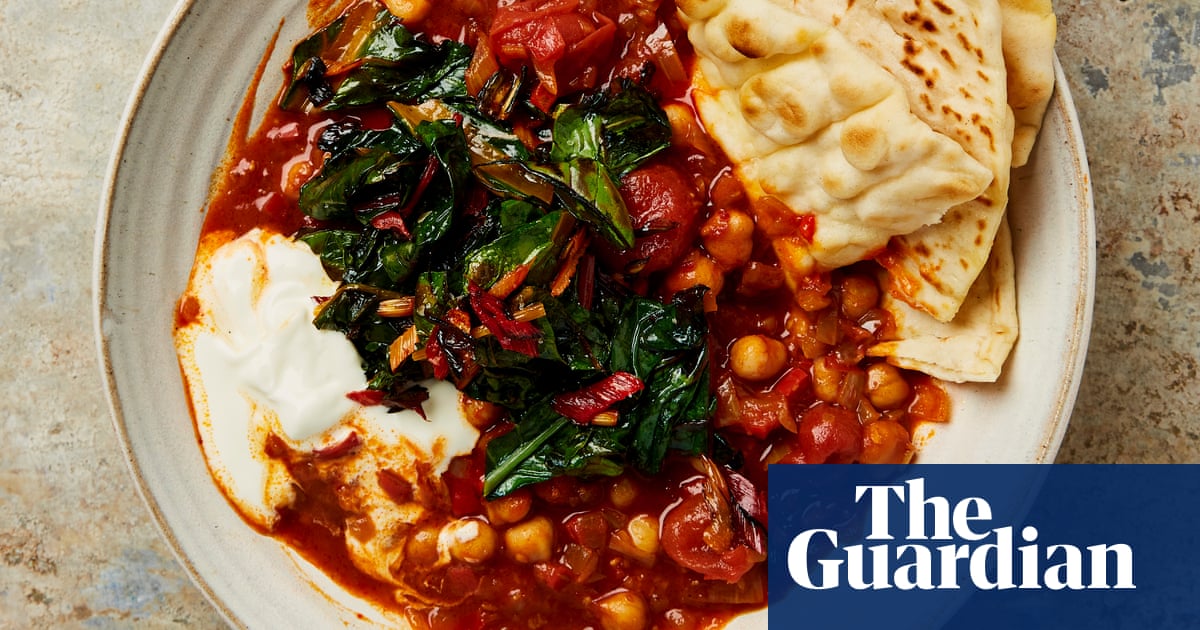Start and finish right, and you’ll never have a bland dish. Top cooks explain how …
Got a culinary dilemma? Email feast@theguardian.com
How can I make my vegetable- and bean-based stews less boring? I fall back on the same seasonings every time.
Hilary, Brighton
It’s all about the base, Hilary. Get that right and you can’t really go far wrong. “If you build the flavour and season from the start, you’re not going to have a boring, bland stew,” says Noor Murad, co-author of Ottolenghi Test Kitchen: Shelf Love. When in “stew mode”, Murad always starts with a paste: “I blitz garlic, ginger and green chilli with herb stems [coriander, parsley; the fresh leaves will be stirred in at the end], a bit of oil and whatever spices I want.” These could be warming spices (think cinnamon and cloves) or more Middle Eastern flavours (fenugreek, turmeric). “That’s the foundation, then I’ll throw in chunks of vegetables and broth, whether that’s chicken or veggie.”
Rosie Sykes, chef and author of the Roasting Pan Suppers, starts her stews with onions, celery, leeks and maybe a carrot. “When sweating the veg, you need a generous amount of oil, so that you get unctuousness,” she says. You’ll also want to add bay or a bouquet garni; alternatively, “sage is really lovely with beans and squash, as is rosemary”, Sykes adds. Then, to give the beans extra body, she turns to whole cloves of garlic. “Add several cloves still in their jackets along with the beans, and let them get really soft. At the end, fish them out, squeeze the flesh into a cup with a ladleful of stew and some liquid, and give them a zhuzh with a stick blender.” Tip this back into your stew with some oil or butter.
Rose harissa is another handy helper. Meera Sodha writes: “It’s the equivalent of a friend who always brings the party, no matter the situation.” One good situation is when it’s added to a pan of fried onions and red peppers, alongside minced garlic, tomato puree, salt, sweet paprika and bashed cumin seeds. Sodha cooks this for five minutes, adds a tin of cherry tomatoes, then cooks again for 10 minutes more, before tipping in two cans of chickpeas and their liquid. Leave to bubble away until the chickpeas are “nice and soft”, and serve topped with fried chard leaves tossed in lemon juice.
The end to Hilary’s stew story is also crucial. “You need something to brighten the really intense flavours that have been cooking for a long time,” says Murad, who makes a “herby, lemony paste” to drizzle on top. Similarly, Sykes often finishes her stews with an almost-gremolata made from lemon zest and soft herbs (parsley, oregano, basil): “The oil takes on the warmth and you get a lovely, perfumed finish.”
Alternatively, if you’ve gone for a spicy vibe, Sykes suggests a ginger and coriander paste: “Chop coriander, grate some ginger, add lemon zest, oil, maybe lemon juice, and stir it in at the end.” Dried limes, meanwhile, are the secret weapon of Shwan Baban, head chef at Berenjak in London. “Pierce a couple and throw them into ghaimeh bademjoon [an Iranian stew of aubergine and split peas] or turnips and chickpeas to add a lemony depth of flavour.”
Got a culinary dilemma? Email feast@theguardian.com




